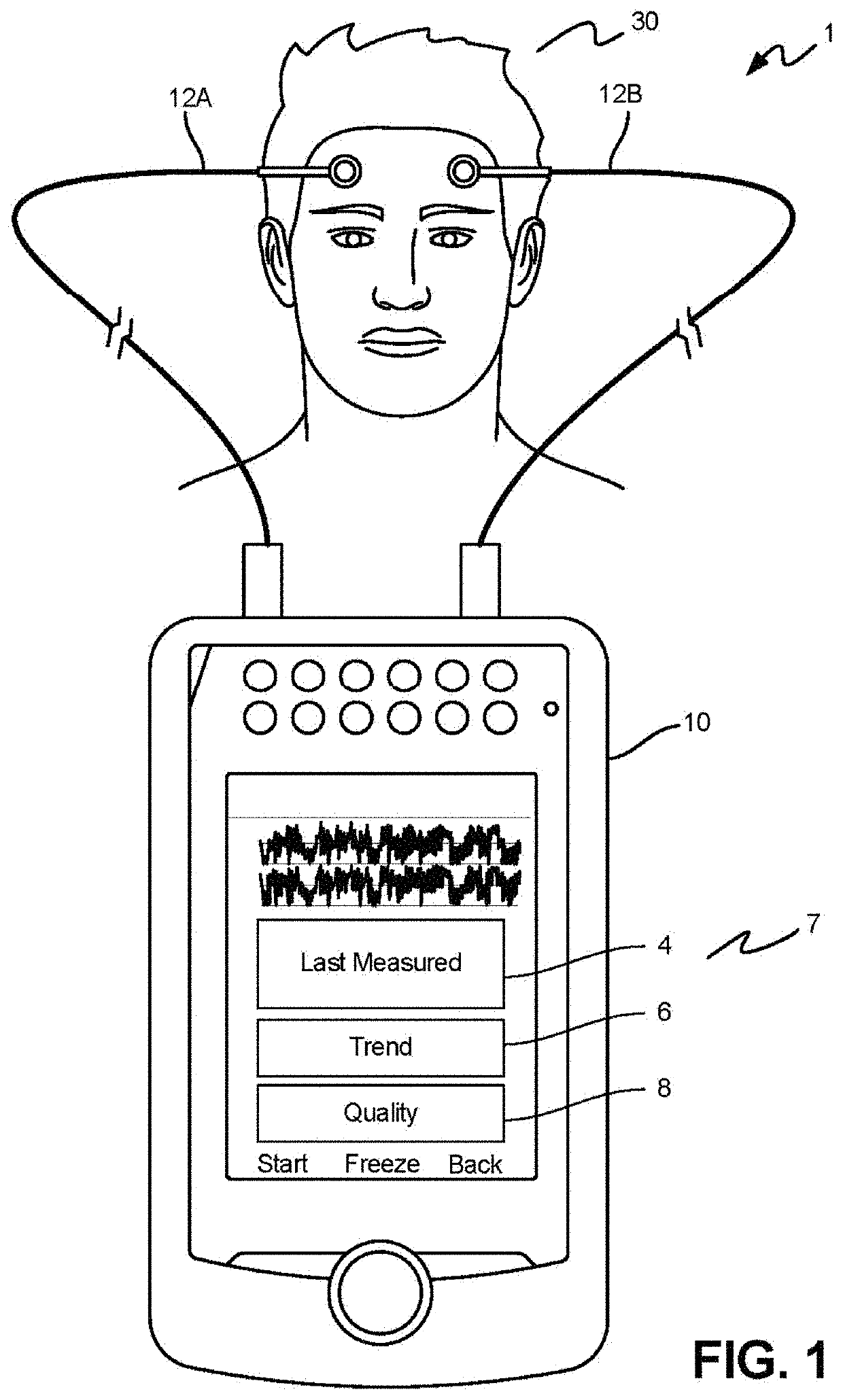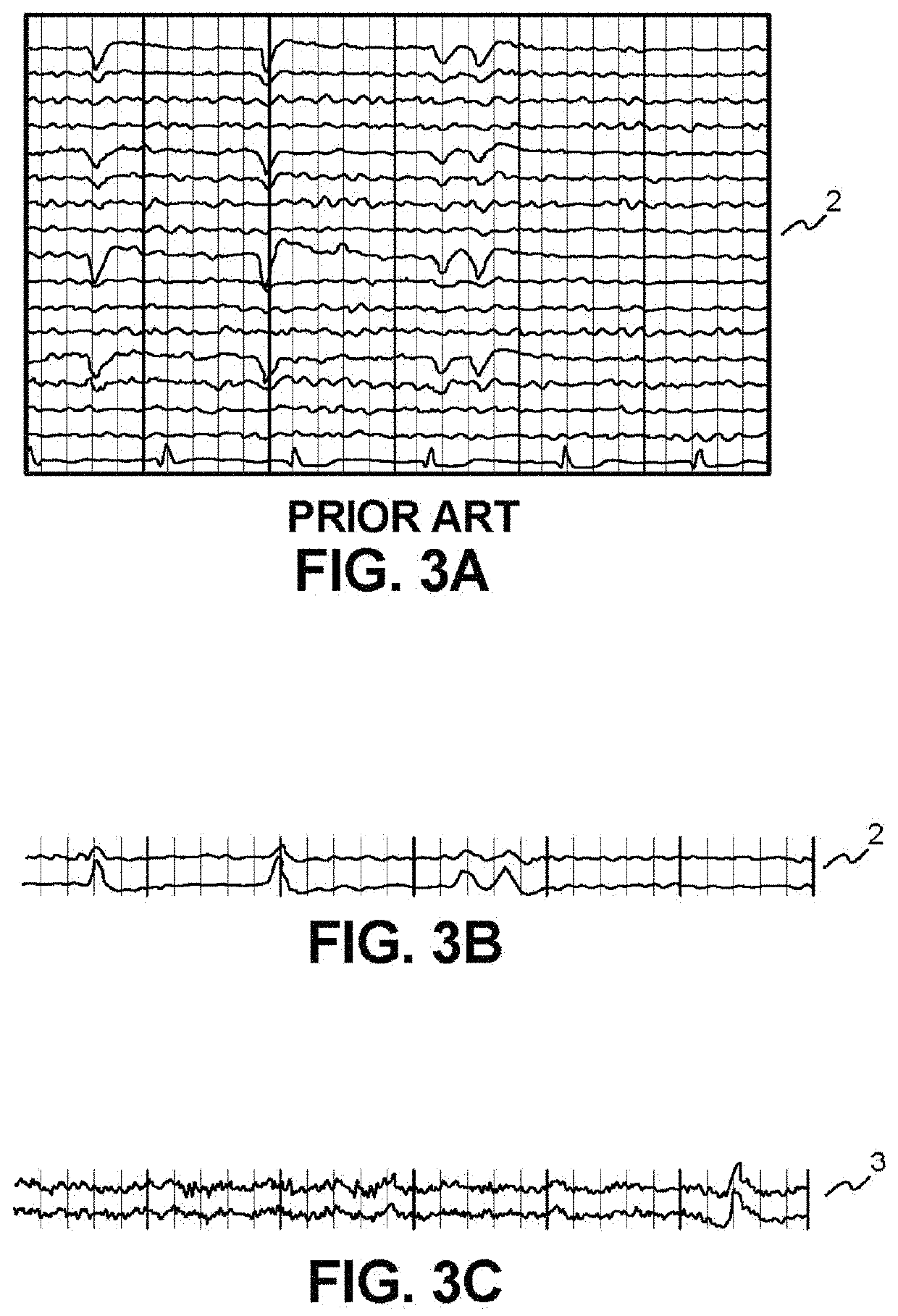Apparatus, systems and methods for predicting, screening and monitoring of mortality and other conditions uirf 19054
a technology of uirf 19054 and apparatus, applied in the field of medical devices, can solve problems such as poor outcomes and achieve the effect of reducing the risk of poor outcomes
- Summary
- Abstract
- Description
- Claims
- Application Information
AI Technical Summary
Benefits of technology
Problems solved by technology
Method used
Image
Examples
example 1
Device Assessment
[0123]In this Example, the initial training set of dataset contained 186 total patient EEG samples correlated with clinical or CAM evidence of delirium. These samples represented 5 positive, 179 negative and two negative cases in which the data quality was inadequate for analysis to be performed were therefore excluded from further review.
[0124]In this Example, a 15 Hz low-pass filter was originally used, but the preliminary results indicated unequal dampening in the FFT frequency information between the positive and negative cases, therefore the low-pass filter eliminated.
[0125]During processing of the processed samples, it was observed that windows of 4 seconds were sufficient to demonstrate good results. Also, in this Example, windows containing high amplitude peaks were excluded using threshold of 500 μV for example as shown in FIGS. 9A and 9B.
[0126]FIGS. 9C and 9D depict the spectral density for the channels, wherein the intensity (in W / Hz) can be compared to e...
example 2
elrium & Mortality
[0140]Methods: This is a prospective study to measure bispectral EEG (“BSEEG”) from the elderly inpatients to assess their outcomes. A normalized BSEEG (“NBSEEG”) score was defined based on the distribution of 2938 BSEEG recordings from the 428 subjects, who were assessed for delirium; primary outcomes measured were hospital length of stay (“LOS”), discharge disposition, and mortality.
[0141]Results: 274 patients had NBSEEG scores data available for analysis. Delirium and NBSEEG score had a significant association (P<0.001). Higher NBSEEG scores were significantly correlated with LOS (P<0.001) as well as with discharge not to home (P<0.01). Hazard ratio for survival controlling for age, gender, Charlson Comorbidity Index and delirium status was 1.35 (95% confidence interval=1.04 to 1.76, P=0.025).
[0142]Described herein is an efficient and reliable device that provides an objective measurement of brain function status. The NBSEEG score is significantly associated wit...
example 3
[0168]This example evaluates the use of two channel frontal EEG activity to quantitatively characterize delirium and predict outcomes including fall risk and mortality.
[0169]Methods.
[0170]Frontal EEG activity (Fp1 and Fp2 EEG locations) was collected from patients after admission or at the time of an emergency room visit. Subjects were assessed for the clinical presence of delirium and the primary outcomes measured were delirium diagnosis, discharge disposition, mortality, and fall history. EEG features (band powers and different combinations of low to high frequency activity) were calculated for both channels and averaged. K-nearest neighbors, logistic regression, support vector machine (SVM), kernelized SVM, and neural network approaches were used to assess the ability of EEG features to predict delirium status, survival, and falls with 5-fold cross-validation.
[0171]Results.
[0172]EEG features and outcome data for 274 inpatients were available for analysis. The top 9 EEG-derived pr...
PUM
 Login to View More
Login to View More Abstract
Description
Claims
Application Information
 Login to View More
Login to View More - R&D
- Intellectual Property
- Life Sciences
- Materials
- Tech Scout
- Unparalleled Data Quality
- Higher Quality Content
- 60% Fewer Hallucinations
Browse by: Latest US Patents, China's latest patents, Technical Efficacy Thesaurus, Application Domain, Technology Topic, Popular Technical Reports.
© 2025 PatSnap. All rights reserved.Legal|Privacy policy|Modern Slavery Act Transparency Statement|Sitemap|About US| Contact US: help@patsnap.com



